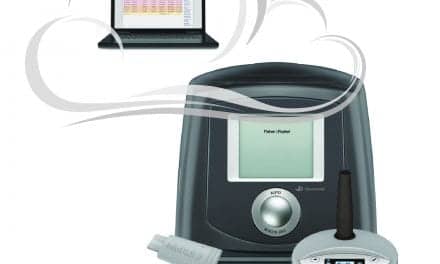Why you should enact a photo/video policy in your sleep disorders center.
By Sree Roy
You’re adjusting the nasal cannula placement on a patient with suspected sleep apnea when you realize with alarm: Your patient is taking a selfie of his sensor-adorned face. Even worse, you are fairly confident that you are in the photo.
Welcome to 2020. This scenario is increasingly common at sleep disorders centers, so if it hasn’t happened to you, rest assured that it likely will in the near future. Thankfully, with a game-plan in place, you can usually avoid the awkward post-selfie conversation, ideally by alerting all patients to the lab’s photo and video policy well before a smartphone camera is ever activated.
Legally, most states are “one-party” jurisdictions, which means the law is unlikely to step in if your patient records you without your permission. (In the few states that are “all-party” jurisdictions, you may have some legal recourse.) But that doesn’t mean you have to let patients take videos or photos in your sleep lab. Each health facility will have to weigh the pros, such as increased transparency of the sleep study patient experience, and cons, such as sleep technologist privacy.
“Health care overall is moving toward greater transparency and patient recordings are going to become more common,” said Glyn Elwyn, MD, PhD, author of a study about whether patients can make recordings of medical encounters,1 in a release. “That means there would be tremendous benefit to patient advocacy groups, health care organizations, providers, and policymakers working together to develop clear guidelines and policies around the responsible, positive use of open recordings.”
Before developing a policy, you’ll want to speak to your team about their concerns, as well as consult with your legal advisor and malpractice insurance carrier. We are all aware of well-publicized cases in which covert recordings were used against health professionals in lawsuits (though in many cases, the health professional lost due to unprofessional conduct, irrespective of a recording). They can answer your questions about HIPAA, potential liability, and any implications of responding to dissemination of information on social media. Surprisingly, Elwyn’s study found at least one liability insurer that offered discounts to doctors who offered patients recordings of their office visits.
Once your photo/video/social media policy is ready, alert patients in advance. You can post the policy in prominent locations, such as on your website, in the waiting and/or sleep study rooms, and on patient information forms.
From there, consistency is key to enforcement. Even if your lab’s policy is to prohibit all recordings, don’t alienate patients who are disappointed; they may have had a valid reason, such as wanting to show their child how easy the experience was, in case the child needs to spend the night at a sleep lab or other medical facility later on.
And if your policy does allow for selfies, one tip: Offer to take the photo for the patient. That way you can frame the shot—which guarantees you won’t be in it!
Sree Roy is editor of Sleep Review.
Reference
1. Elwyn G, Barr PJ, Castaldo M. Can patients make recordings of medical encounters?: What does the law say? JAMA. 2017 Aug 8;318(6):513-4.

![Handling the Inevitable Sleep Lab Patient Selfie [Editor’s Message]](https://sleepreviewmag.com/wp-content/uploads/2020/03/sleep-lab-selfie-photo-policy-1280x640.jpg)

